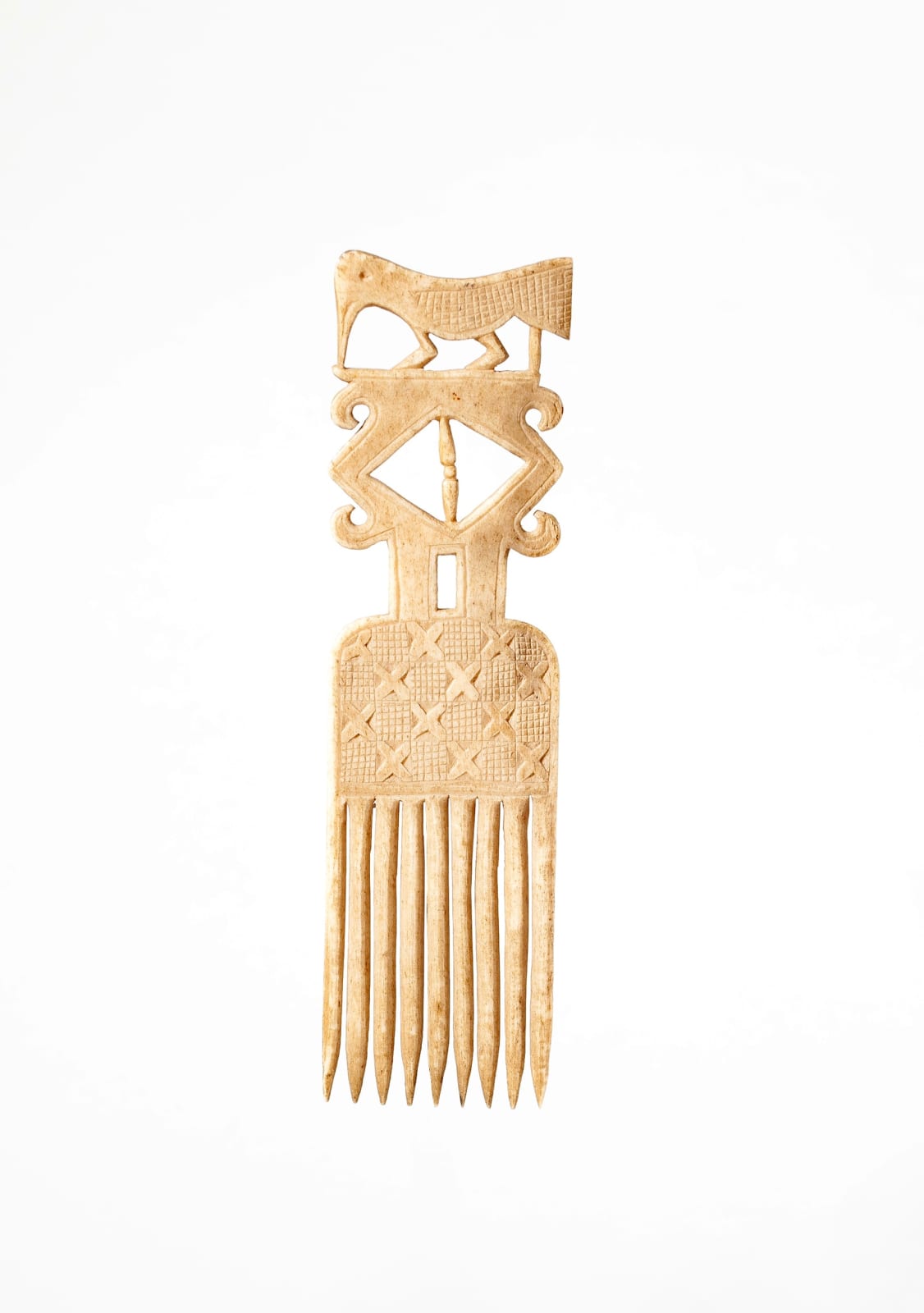Anonymous Edo artist
Ealry 20th century
Bone
height 7 1/2 in
Prestigious Edo oyiya (combs) were decorated by carvers to make the objects more attractive, to commemorate events, and for use by members of the royal court. The design could indicate for whom the comb was intended. Oyiya in Benin were historically carved from wood or, in the case of more elaborate examples, ivory or bone. They are usually long and thin in form, with wide-spaced teeth. In some cases, the handles are carved simply, whereas in others they feature elaborate motifs and decorations. Combs would have had a functional use, to comb and plait the hair, allowing it to be dressed and styled, but when made in prestigious materials, such as bone, functioned more as a prestige item, indicating status and wealth. Combs with certain iconographic elements could only been used only by specific members of the royal court. The king or Oba of Benin's power and spiritual connection was sometimes represented by birds. While rarely featured in comb’s iconography, birds feature prominent in Edo art in the form of brass hand-held clappers. These musical instruments are said to commemorate king Esigie’s victory in the early sixteenth century during the war against the Igala. A wooden comb, with an almost identical depiction of a bird, is held by the British Museum (Af1984,19.228). It was collected by Maurice Stanley Cockin, who did two tours of duty as Assistant District Commissioner in southern Nigeria in the years 1908 to 1914, posted to Owo and Ishan, where he formed a collection later to be acquired by the British Museum.
Provenance
Private Collection, UK
Adam Prout, Didbrook, UK, 2024
Duende Art Projects, Antwerp, Belgium, 2024
let's keep in touch
Join our community & never miss out on a DUENDE moment from now on
* denotes required fields
We will process the personal data you have supplied to communicate with you in accordance with our Privacy Policy. You can unsubscribe or change your preferences at any time by clicking the link in our emails.
